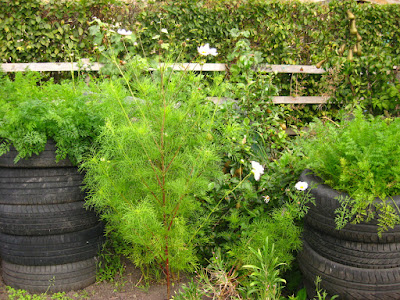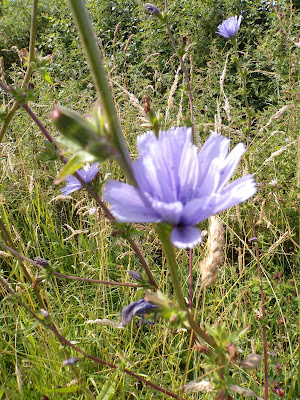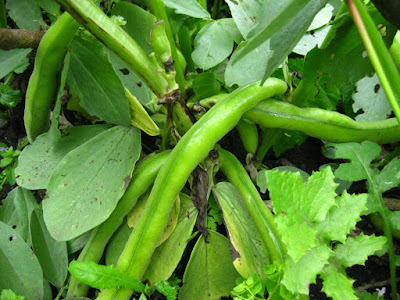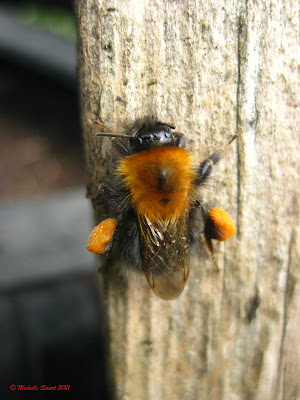I have recently been in conversation online with two individuals about the way in which incidents are described in relation to climate change.
Of course, very few sensible people now doubt the science of climate change and that it is happening. There are online troll and bot accounts, and indeed individuals linked to some of the known lobby groups and polluting industries that do sow doubt or spread denial messages but sites like www.skepticalscience.com and www.desmog.com are two of my go-to sites for accurate analysis and information on who is often behind such activities.
There is, perhaps sometimes understandably, a narrative in some environmental circles of "doomism" or "climate alarmism" which can often manifest itself in taking the worst case scenarios in climate predictions and presenting them as a fait accomplit. Michael E. Mann, in his book, "The New Climate War" looks at how some of these narratives have been sown by some on the denialist side, framing it as being too late to do anything, or a message of fatalism to try and get people to give up taking action against climate change as they claim it is futile. I have had conversations with one of the regular doomist environmental campaigners on Twitter who regularly posts in terms that might just as easily be written as, "THE END" in flashing day-glo letters. I have made the point that if things really are as bad as he is making out, one either would get too depressed to do anything, or would simply think that one might as well do the bucket list while one still can.
Michael E. Mann talks about urgency and agency. Yes, telling people that we need to do something quickly to tackle climate change but also that one can do something about it, however small or big and also that the sooner we act, the more mitigation can be done.
This brings me on to the recent conversation about how particular events are described both on and offline. In the UK there is a newspaper, if you can call it that, called the Daily Express that frequently posts headlines taking what might be the extreme end of a storm or snow prediction for some remote corner of Scotland and framing it as being for the whole country. If people believe those predictions they would spend a fair chunk of the year too scared to step outside their front door!
Also, often in the media and online, one will see headlines such as, "Country x underwater" or "Country y on Fire" when a severe weather or environmental event happens, when actually the event is confined to a particular part of the country. In the bid for the most eye catching headline context can be lost. Is the storm the worst ever? Or just the worst this winter? Has the drought happened before or is it new for the area? Is the wildfire across an entire State or is it localised to a particular area? This isn't downplaying the effects of such events, there can often be loss of life and property and hardship for those involved, but to understand climate change these events need to be put in the context of history and trends and frequency of occurrence, and indeed in the context of the area affected compared to the whole country or region.
There is of course a fine balance to be struck between the "urgency and agency" as Prof. Mann puts it and ensuring that an accurate portrayal of events is made, one which cannot then be used by the well funded denialists to accuse climate change mitigation advocates in the future of crying wolf or of exaggeration or distortion. Also, we owe it to the wider public to be accurate, to be contextual, to be clear and explain how a particular event may have been affected by the wider climate changes and how the localised effects are creating harm.
With permission, I have reproduced below a tweet I replied to the other day and will try to analyse this example and rephrase in a more contextual fashion.
"Germany, Belgium, London, Italy, Pakistan now, floods. USA, Russia, Canada on fire. Any patterns emerging? Anyone? Or maybe it’s just unlucky. If you want to stop the 50 years of talking and actually be pragmatic and do something, now would be a good time to start."
So, let's start with this.
"Germany, Belgium, London, Italy, Pakistan now, floods."
Yes, it is true that the above countries and places are suffering floods, in the case of Germamy and Belgium these are widely recognised as being abnormally severe. However, Germany is a big country, so is Italy and Pakistan, and all of those three have mountainous and other areas that are much less likely, if at all, to flood. Are these floods unprecendented? Are they merely worse than average? Are these a 1 in 25 or 1 in 100 year event, as is calculated by people such as actuaries and insurance agents?
In London, there's historical record of the Thames flooding on a regular basis into the City, Samuel Pepys mentioned it in his diaries of the 1660s. A severe flood happened in 1928. Is it worse than that? What I do actually know is that the particular events have been caused by surface water flooding from thunderstorms, but here in the UK we get thunderstorms at any time of year, often severe in summer, so heavy intense rain isn't unusual, I've experienced it in York where a number of streets were flooded and buildings hit by lightning. How much has the increase in concreting over of driveways and additional housebuilding and tree cover loss affected the surface water flooding? Is it actually the landscape mitigation of a reasonably frequent event that has changed, rather than climate change making the particular flood worse?
So, from one simple statement there's a whole lot of questions. Can you pin those floods directly to climate change? Would they have happened if the man made climate change wasn't there? Are they made worse by climate change?
"USA, Russia, Canada on fire." What?! All of them? That's a really big fire and they are really big countries!
I checked, the wildfires in Canada, dramatic as they seem, are only affecting 0.12% of the country. Still a lot of ground and the smoke is drifting over cities but that is nowhere near the whole country on fire! What is 0.12% of Canada compared to say the size of Wales? (an often used comparision in reporting here in the UK!) Russia is so big that although the Siberian wildfires can be seen from space, most of the country will not be affected in any way by them.
In 1950, the Chinchaga fire in Canada was the largest single fire in North American recorded history. Was that climate related? Were the 2014 Northwest Territories and 2016 Alberta fires climate change related or made worse from climate change?
Again, all questions which really don't lend themselves to simplistic reporting. The author of the tweet is right to ask what patterns are emerging, or maybe these are - taken individually - just freak events or indeed are they part of natural cycles of burning and renewal? Is it just that humans have made these events more likely through activities unrelated to putting carbon into the atmosphere - for instance carelessness with littered glass or camping fires or indeed deliberate fire setting, these causes being responsible here in the UK for some wildfires.
Going on, the author is inaccurate in seeming to imply that people are merely just talking and not doing. I can agree that not enough is being done, there has been inertia, influenced by polluters and denialists, in climate change mitigation, but if you take UK decarbonisation for an example, the switch from coal is nearly complete in power generation and a large amount of renewables capacity, particularly wind, has come on stream with lots more to follow. There's a lot of technical innovation happening, I am invested in a wave power company and also in agricultural robot manufacturer for instance and there's been substantial financial divestment going on as companies manage their risk exposure to climate change and fossil fuels.
We can say for certain that the incidence and intensity of all substantial climate events, whether drought, floods, hurricane intensity etc is increasing due to climate change. The instability of what did formerly be more predictable weather patterns is increasingly noted and these have effects on land and in nature. There are more "stuck" weather patterns due to variations in the jet stream and heat build up in such as the Arctic is influencing the weather not just in that region but in lower latitudes too.
However, simplistic headlines do not tell the full story and may even exaggerate or distort the story. Alarmist statements can be used to discredit or dishearten or indeed cause people to give up. However, if events are reported on accurately, the effects are expained and indeed these events are set into the wider historical and geographical contexts then the public can get a better idea of what is going on, how it may affect them and indeed how particular severe events may or may not be related to wider climate trends.









































